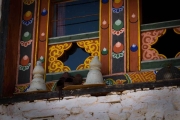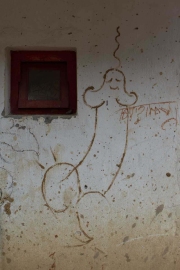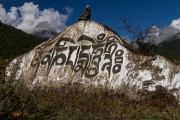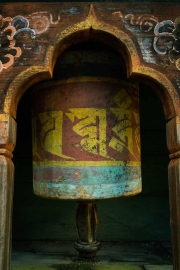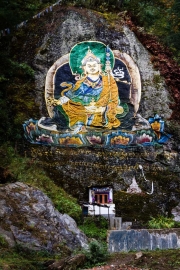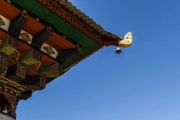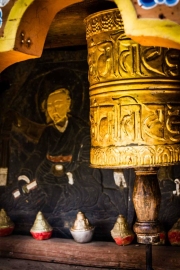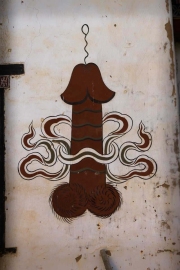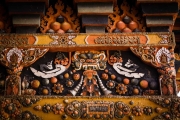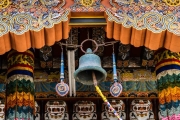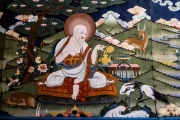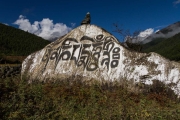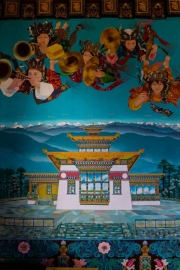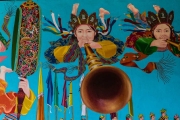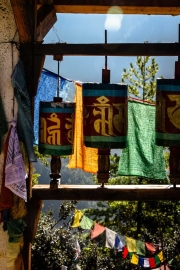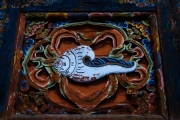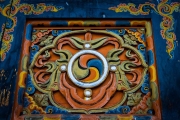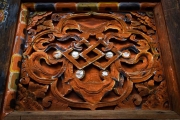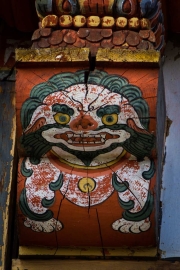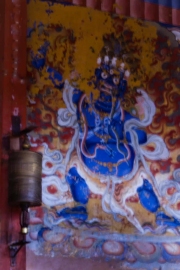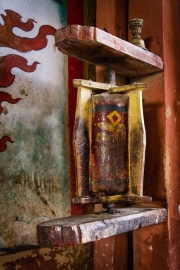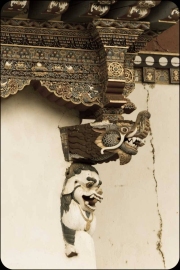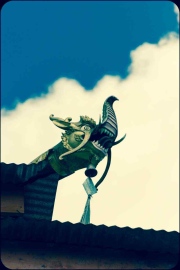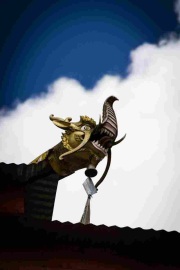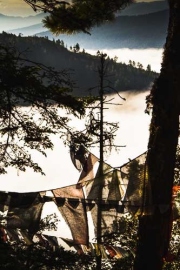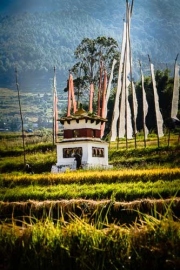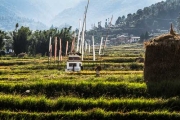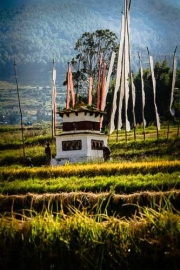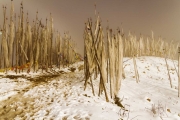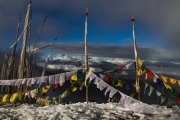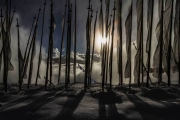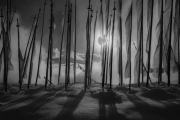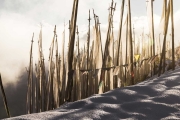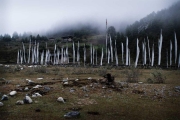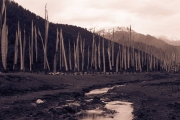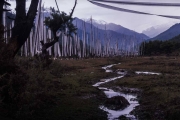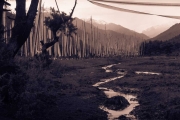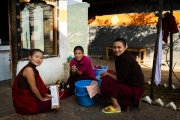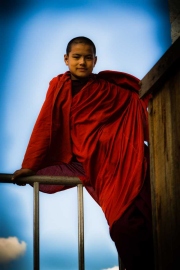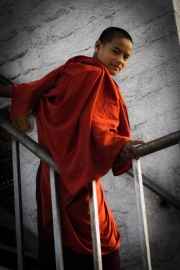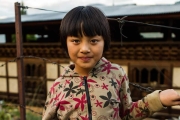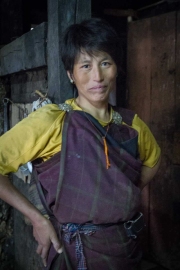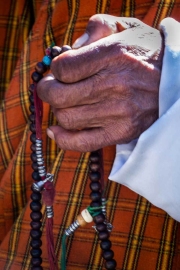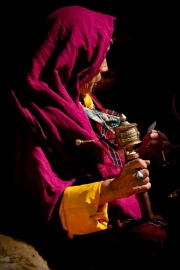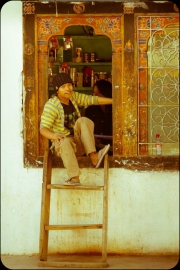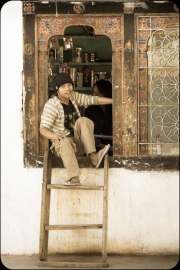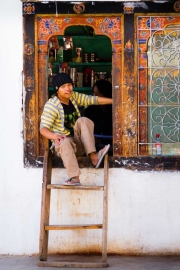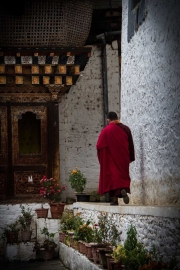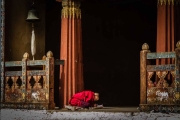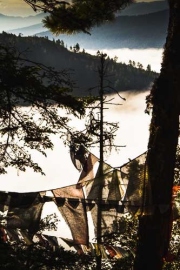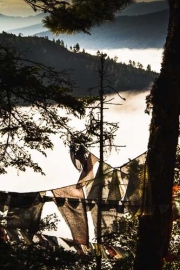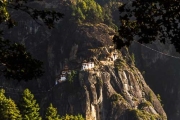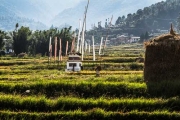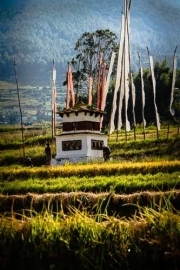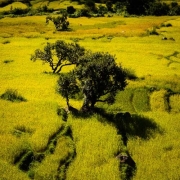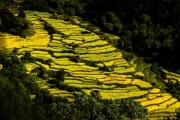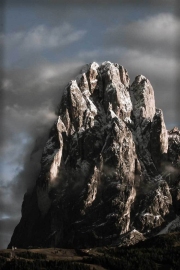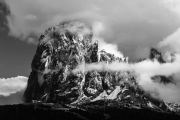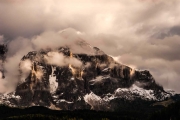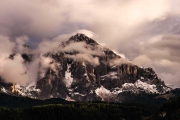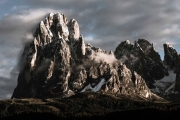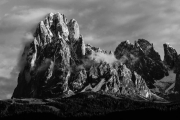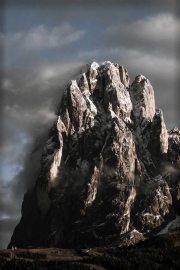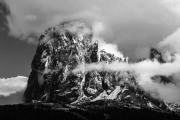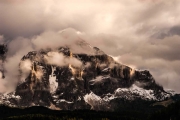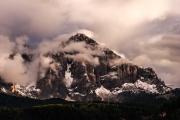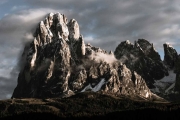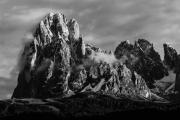Bhutan, Land of the Thunder Dragon
Bhutan, known as the Land of the Thunder Dragon, is a small Himalayan kingdom nestled between India and China. Known for its breathtaking scenery, vibrant culture, and commitment to Gross National Happiness, Bhutan offers a unique blend of tradition and modernity. Its stunning landscapes range from lush subtropical plains to rugged mountains and is home to iconic sites like the Tiger’s Nest monastery, perched precariously on top of a cliff. This last Himalayan Kingdom, often called Shangri-La, preserves its rich cultural legacy through colorful festivals, intricate architecture, and deeply rooted Buddhist traditions. With its emphasis on sustainable development and preservation of cultural identity, Bhutan remains a truly enchanting destination for adventurers and seekers of tranquility alike.
Carrying Prayers to Heaven
The long white prayer flags, known as Lungta or Lungdar, meaning Wind Horse, hold significant symbolism in Bhutanese culture including purity and spiritual prowess, prayers and blessings as well as protection from negative forces. They serve as spiritual shields. All prayer flags symbolize the power of the wind which has the ability to carry prayers to the heavens. And as the flags flutter they also send good fortune, prosperity and positive energy.
The GNP of Happiness
The people of Bhutan are known for their warmth, hospitality, and strong sense of cultural identity. So much so that wearing the traditional dress is common whereas wearing western attire is still uncommon and often frowned upon.
Bhutanese society is largely influenced by Buddhist principles, which emphasize compassion, harmony, and respect for all beings. This is manifested in the kingdom’s concept of Gross National Happiness, GNH which prioritizes the well-being and happiness of citizens over purely economic measures.
The Symbols of a Heavenly Kingdom
Bhutanese culture is rich with symbols that reflect its deep spiritual heritage, reverence for nature, and unique identity.
Druk the (Thunder Dragon) national symbol of Bhutan, representing sovereignty & power, Druk embody’s sovereignty and power and protects the land and it’s people.
Wheel of Dharma also known as the Dharmachakra, it is a symbol of Buddhism representing the teachings of Buddha.
Zorig Chusum (Thirteen Traditional Arts and Crafts) are the thirteen traditional arts and crafts of Bhutan, including skills such as painting, sculpture, wood carving, weaving, and metalwork. They symbolize Bhutan’s commitment to preserving its cultural heritage and craftsmanship.
Bhutanese Architecture: The distinctive architecture of Bhutan, characterized by dzongs (fortresses), monasteries, and traditional houses, symbolizes the country’s unique cultural identity and its harmonious relationship with nature.
Chorten (Stupa): Chortens are sacred Buddhist monuments found throughout Bhutan. They symbolize the enlightened mind of Buddha and serve as places of worship, meditation and pilgrimage.
Phallus in Bhutanese culture, phalluses are considered symbols of fertility and protection against evil spirits. They are often depicted in paintings, carved wooden ornaments, and murals, particularly in rural areas.
Five Sacred Jewels are symbolic representations of five important aspects of Buddhist teachings: the Buddha, Dharma (teachings), Sangha (spiritual community), the stupa, and the prayer wheel. They are revered symbols in Bhutanese Buddhism.




